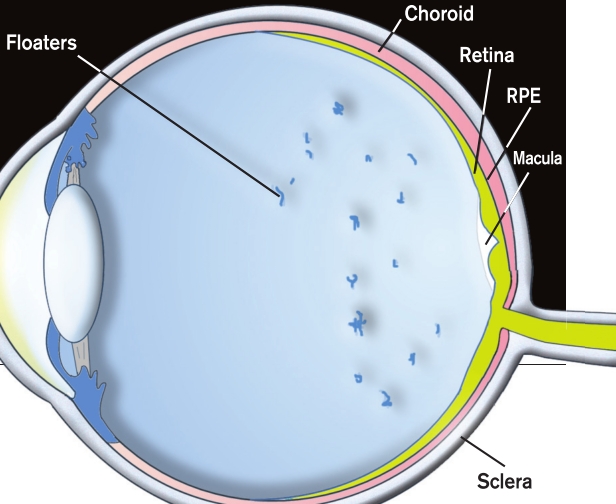
Help for floaters
Few things are more frustrating than vision problems. And one that has been particularly frustrating over the years is a condition called “floaters.” Most people have seen them occasionally, but some people see them frequently.
Floaters are fibers of collagen that randomly float through a person’s vision. In younger people, the vitreous humor, the clear, jelly-like substance in the main chamber of the eye, is perfectly transparent. However, as the eye ages, this fluid located between the lens and the retina can degenerate, losing its form and liquefying. Without stable vitreous humor, the collagen fibers collapse and bind together to form clumps and knots. These fibers, which cast shadows on the retina and appear as spots, strings or cobwebs, are commonly referred to as “eye floaters.”
In many cases as the eye ages further, the vitreous humor can peel away from the retina entirely. This is known as Posterior Vitreous Detachment (PVD). PVD is often associated with a sudden increase in the number of floaters.
The negative effect that floaters can have on a patient's quality of life has traditionally been largely underestimated. In patients with significant symptoms, floaters can drastically impede vision, so much so that they not only affect visual quality and functioning but can also have a psychological impact.
In the past, vitrectomy, the surgical removal of the fluid, has been commonly considered the gold standard for the treatment of debilitating floater symptoms. Due to the risk of complications associated with the procedure – infection, macular edema and retinal detachment – many eye doctors were reluctant to recommend and perform vitrectomy and instead reserved it only for the most severe and distressing cases.
Laser vitreolysis, which is also known as laser floater removal, involves the use of an ophthalmic laser to vaporize vitreous strands and opacities, and it does not carry the same risks of infection, bleeding or retinal detachment that comes with vitrectomy. Vitreolysis is a noninvasive, pain-free procedure that can eliminate the visual disturbance caused by floaters. The goal of vitreolysis is to allow patients to return to normal day-to-day activities without the hindrance of floaters.
With
vitreolysis, the doctor uses nanosecond pulses of laser light to
evaporate the vitreous opacities and to sever the vitreous strands.
During this process, a floater’s collagen fibers and molecules are
converted into a gas. The end result is that the floater is removed
and/or reduced to a size that no longer impedes vision.
Patients
are happy to learn that vitreolysis is an outpatient procedure.
Immediately prior to treatment, an eye drop is placed in the eye to
provide mild anesthesia. A contact lens is then placed on the eye with
laser light delivered through a specially designed microscope.
During
the treatment the patient will notice small, dark specks/shadows, and
this signals that the floaters are being evaporated into small gas
bubbles. These gas bubbles quickly dissolve and resorb into the
vitreous.
Clinical
studies have shown vitreolysis to be a safe, effective treatment for
floaters; however, not all floaters are treatable. An evaluation by an
experienced eye doctor can help to determine if laser vitreolysis can be
beneficial. WK Eye Institute doctors were among the first in the region
to offer this technology, and they offer evaluations at all three
locations: Pierremont, South and North.
Stephen
Lewis, OD, is a partner at WK Eye Institute North, located at the
Willis-Knighton Eye Institute, 2611 Greenwood Road, part of the
Willis-Knighton Physician Network.